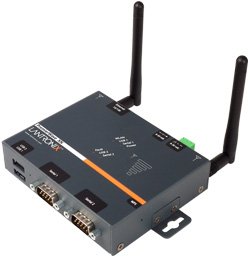 The solar wind is a stream of charged particles flowing out from the
Sun, or any star, in all directions. The solar wind is mostly made up
of free protons and electrons (plasma)
with energies of about 1 keV (kilo-electron-volt). This quite
energetic, but solar wind is usually harmless because of its low
density. The solar wind extends outwards about 100 AU (astronomical
units, Earth-Sun distances), about three times as far from the Sun as
the orbit of Neptune, at which point it collides with the interstellar
medium. The region where the solar wind is dominant is known as the heliosphere.
The solar wind is a stream of charged particles flowing out from the
Sun, or any star, in all directions. The solar wind is mostly made up
of free protons and electrons (plasma)
with energies of about 1 keV (kilo-electron-volt). This quite
energetic, but solar wind is usually harmless because of its low
density. The solar wind extends outwards about 100 AU (astronomical
units, Earth-Sun distances), about three times as far from the Sun as
the orbit of Neptune, at which point it collides with the interstellar
medium. The region where the solar wind is dominant is known as the heliosphere.It is not completely known how the solar wind escapes the Sun and travels outward. It is partially due to the extremely high temperature of the corona, thehighest layer of the Sun's atmosphere, which ranges between 1 and 3 million Kelvin (1 and 3 million Celsius, 1.8 and 5.4 million Fahrenheit), reaching occasional highs of 10 million Kelvin. The high temperature of the corona is an unsolved question in physics itself, but the speed of the solar wind as it is ejected from the Sun -- between 400 and 700 km/s -- is another mystery. Even taking into account the high temperature of the corona, these particles must be getting some additional kinetic energy from somewhere to escape the Sun at the speed they do. The magnetic fields generated by free electrons may contribute to the acceleration of protons away from the Sun.
 The solar wind is the source of various phenomena visible from Earth, including the aurorae (Northern Lights(The Northern Lights, or Aurora Borealis, are glowing bands, circles and streams of colored lights that sometimes appear in the northern latitudes.)
and Southern Lights), geomagnetic storms, the most severe of which can
damage power grids and put astronauts in danger, and the plasma tails of
comets. The Sun emits about 6.7 billion tons of solar wind per hour,
which sounds like a lot, but becomes practically nothing when spread out
across the vast expanse of space. An Earth-mass of solar wind is
ejected only every 150 million years, and the Sun has only lost 0.01% of
its mass over its 4.57 billion year age. Other stars, especially
Wolf-Rayet stars, lose much more of their mass to solar wind over time.
While the Sun would require 50 trillion years to eject all its mass via
the solar wind, a Wolf-Rayet star requires only about 100,000.
The solar wind is the source of various phenomena visible from Earth, including the aurorae (Northern Lights(The Northern Lights, or Aurora Borealis, are glowing bands, circles and streams of colored lights that sometimes appear in the northern latitudes.)
and Southern Lights), geomagnetic storms, the most severe of which can
damage power grids and put astronauts in danger, and the plasma tails of
comets. The Sun emits about 6.7 billion tons of solar wind per hour,
which sounds like a lot, but becomes practically nothing when spread out
across the vast expanse of space. An Earth-mass of solar wind is
ejected only every 150 million years, and the Sun has only lost 0.01% of
its mass over its 4.57 billion year age. Other stars, especially
Wolf-Rayet stars, lose much more of their mass to solar wind over time.
While the Sun would require 50 trillion years to eject all its mass via
the solar wind, a Wolf-Rayet star requires only about 100,000.The solar wind is the primary phenomenon in space for a large distance, but not forever. The influence of the solar wind begins to falter at the termination shock, about 75 AU from the Sun, where the velocity of the solar wind decreases from supersonic to subsonic. The space probe Voyager 1 reached the termination shock on 23-24 May 2005. Data sent back from its sensors has given scientists a better idea of how dynamics change when the solar wind is not the primary influence on the local space environment.


No comments:
Post a Comment